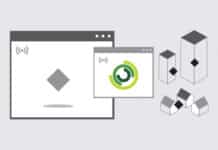There are many cloud security tools on offer today, and each has its benefits as well as limitations. Let’s understand the tricky world of these tools and see how we can choose the right one for strong defences.
Most of my work involves discussing cloud security with clients, and one of the most common questions I get is: “How do we implement security best practices in the cloud?” That’s when the conversation often circles back to this never-ending debate — ‘Cloud-native CSP tools vs third-party commercial tools vs open source tools: Choosing the ultimate winner’.
With enterprises shifting towards agile and multi-cloud setups, security is increasingly being viewed as a challenge. Cloud security tools are crucial for keeping complex cloud systems safe because the latter are hard to manage manually. These tools are typically classified into the following three categories.
- Cloud-native tools are offered by cloud service providers (CSPs) such as AWS, Google Cloud Platform, and Microsoft Azure. These are usually in the form of services integrated within the cloud platform such as Security Hub and GuardDuty from AWS, Security Command Center of GCP, etc.
- Third-party commercial tools are developed by various specialised vendors. Examples include security solutions from companies like Crowdstrike, Checkpoint, and Fortigate.
- Open source tools are created and maintained by the community and are free of cost. Examples include cloud security tools like Prowler and Scoutsuite.
Let’s see how these three categories of tools vary and when one might use them.
Cloud-native tools
These tools are provided directly by CSPs like AWS, Google Cloud, and Microsoft Azure, in the form of services. They offer some distinct advantages like seamlessly integrating with other services from the same CSP, making implementation a piece of cake. Plus, they’re often equipped with rapid detection capabilities, swiftly identifying and addressing security threats within the CSP environments.
However, it’s essential to weigh these benefits against the limitations. While cloud-native tools cover basic security needs well, they lack the ability to be customised based on an organisation’s needs. This lack of customisation can be a significant drawback, particularly for businesses operating in highly regulated industries like banks and federal services. Additionally, relying completely on CSP-provided controls may lead to vendor lock-in, making it challenging to migrate to other cloud providers or third-party commercial solutions in the future, especially for organisations considering a multi-cloud strategy.
In recent times, CSPs have recognised these limitations and have begun offering cloud-native solutions that support a multi-cloud setup as well. A prime example of such solutions is Azure’s Defender for Cloud. Ultimately, businesses that embrace these solutions are likely to become more profitable in the long run.
Third-party commercial tools
On the other hand, third-party commercial solutions offer a range of features and functionalities. They often offer superior threat detection capabilities, enhanced compliance management tools, and greater customisation options. These solutions can seamlessly integrate with existing security systems and are compatible with multi-cloud environments, providing consistent security measures across various providers. They also provide deeper insights beyond what CSPs typically offer.
However, there are notable challenges associated with third-party commercial solutions; they bring their own risks into the supply chain. Integrating and managing these solutions can be complex, requiring additional training and resources. Moreover, the costs associated with licensing and maintaining third-party commercial solutions can be substantial, particularly for organisations with large-scale cloud deployments. These expenses add to the overall opex budget allocated for cloud security.
Open source tools
Open source tools also play a significant role in cloud security. These tools, developed collaboratively by communities of developers, offer flexibility, cost-effectiveness, and support. They provide access to a range of security functionalities without the huge price tag associated with cloud-native and third-party tools.
However, leveraging open source tools may require technical expertise for integration, customisation and management. Organisations must ensure proper community support and maintenance of the tool to maximise the benefits. Industries with strict regulations like banks and federal services often refrain from utilising open source solutions due to their concerns regarding security governance. Security is the biggest limitation in open source tools.
This leads to the crucial question: Why do organisations choose open source tools, and why do consultants recommend them? The answer is straightforward: it’s the calculation of benefits over risks taken. Organisations are aware of the advantages of utilising open source tools over the potential risks involved. This is the same thought process behind the shift to cloud computing. Despite the known security challenges associated in migrating to the cloud, many organisations have proceeded with the migration, driven by the assessment that the benefits of cloud adoption surpass the associated risks.
As a consultant, before recommending cloud security tools I thoroughly try to understand six key areas.
Business requirements: A project fails if it doesn’t align to the organisation’s business requirements and goals. This includes understanding the organisation’s industry, regulatory requirements, and specific security concerns. The time invested in understanding the business requirements during client engagements helps to make specific recommendations that align closely with the organisation’s goals and objectives. However, this level of detail can also prolong the engagement process.
Team’s knowledge and experience: Next, it is time to assess the team’s ability to handle cloud security tools. Financial institutions, for example, prefer straightforward third-party tools because they streamline processes for risk and compliance teams. In contrast, startups with proficient teams may lean towards using open source tools for their flexibility and cost options.
Cost and budget considerations: Understanding the cost and budget considerations ensures that tool recommendations align with both technical needs and financial limits. This way, we find a good balance between how well the security works and how much it costs, leading to smart, long-lasting choices for using cloud security tools.
Tool features and integration: Matching the chosen tool features with the organisation’s needs is critical. Companies operating on a single cloud platform might benefit more from using native tools provided by their cloud service provider. However, organisations with multi-cloud setups often require third-party tools for better management. Additionally, integration with other systems is key, and third-party tools typically have an advantage in this area.
Preventive and protection controls: The priority is to select tools that can both prevent and respond to security threats effectively. This often involves combining native tools with third-party solutions. Native tools are excellent for handling basic security tasks, such as blocking unauthorised access, while third-party tools excel in areas like real-time monitoring and threat detection.
A great example of this is integrating AWS CloudTrail and GuardDuty logs, which are cloud-native solutions, with Splunk, which is a third-party commercial solution for real-time monitoring.
Ease of management: Finally, ease of management is a critical consideration. In a fast-paced startup environment, simplicity and scalability are the key, so tools that are easy to configure and require minimal maintenance are preferred. Cloud-native tools often excel in this aspect. Mostly, larger organisations or those with complex security needs may opt for third-party tools, despite their higher setup and maintenance requirements, because they offer more advanced features and customisation options.
The verdict
When it comes to cloud security tools, there’s no perfect solution that suits every organisation. Because each organisation has its unique needs, skills, and regulations which must be considered.
Here’s a mantra to follow: “Keep things simple.” Solutions with advanced features can look attractive but tend to bring about unnecessary complications. Begin with easy-to-use, direct tools like cloud-native tools in the initial stages. Adopting this approach streamlines the management of your cloud security. As our cloud security practices evolve and mature, choose tools that offer customisation to meet organisation’s goals and requirements. In such cases, third-party commercial tools can be used.
Tools are meant to address your concerns, not add to them. If a tool flags a vulnerability, it doesn’t mean you have to completely change your security plan to fix that one vulnerability. Think of tools as navigating with a map; you determine the destination, and the tools assist you in reaching it. Therefore, focus and spend more time on establishing your organisation’s security goals and strategies, and using tools as a means to achieve those objectives.
















































































